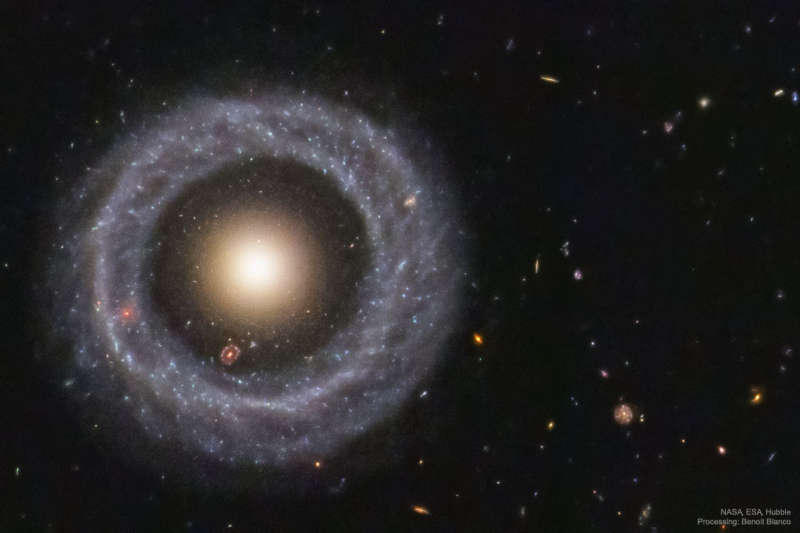Hoags Object: A Nearly Perfect Ring Galaxy

Explanation:
Is this one galaxy or two?
This question came to light in 1950 when astronomer
Arthur Hoag
chanced upon this unusual extragalactic object.
On the outside is a
ring dominated by bright blue stars,
while near the center lies a ball of much redder stars
that are likely much older.
Between the two is a
gap that appears almost completely dark.
How
Hoag's Object formed, including
its nearly
perfectly round ring
of stars and gas, remains unknown.
Genesis hypotheses include a
galaxy collision
billions of years ago and the gravitational effect of a
central bar that has
since vanished.
The featured
photo was taken by the
Hubble Space Telescope
and recently reprocessed using an
artificially intelligent de-noising algorithm.
Observations in
radio waves
indicate that
Hoag's Object has
not
accreted a smaller galaxy in the past billion years.
Hoag's Object spans about 100,000
light years and lies about 600 million
light years away toward the
constellation of the Snake
(
Serpens).
Many galaxies far in the distance are visible toward the right, while
coincidentally, visible in the gap at about seven o'clock,
is another but more distant
ring galaxy.
Authors & editors:
Robert Nemiroff
(MTU) &
Jerry Bonnell
(USRA)
NASA Web Site Statements, Warnings,
and Disclaimers
NASA Official: Jay Norris.
Specific
rights apply.
A service of:
LHEA at
NASA /
GSFC
& Michigan Tech. U.

